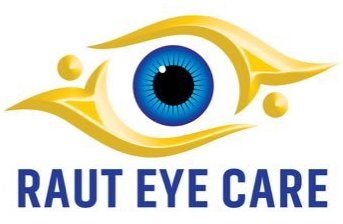Latest articles on eye care
Read the latest articles on eye care, eye diseases, eye tests, eye surgeries, eye care tips and more

What is a -7.50 spectacle glasses number
Having a -7.50 number of glasses is indicative of a myopia. This kind of number can be seen in people who have a bigger eye or a longer eye. You will require glasses for this number for distance vision as well as reading. This number can cause strain for reading if you do not use it and strain for distance vision as well. Not uisng this number can also cause a accomodative spasm. This number can also lead to squinting of eyes . This kind of number in children can cause eye strain and progressive increase in number -7.50 number can even be needed for distance vision by people who are straining their eyes or are working on a laptop or pc the whole day. You can use contact lenes instead of glasses . A high myopia can be correct by LASIK or prk or refractive lens exchange or ICL surgery The axial length of the eye is more than normal by 2.25 mm in with this number which can be measured by a IOL master scan. This kind of number increases the risk of having a retinal deatchment, lattices or holes in the reinta. A retina exam every year is necessary.

Low-intensity ultraviolet A irradiation of the lens capsule to remove lens epithelial cells during cataract surgery: Effectiveness and safety
Raut, Rajeev M. DO∗. Low-intensity ultraviolet A irradiation of the lens capsule to remove lens epithelial cells during cataract surgery: Effectiveness and safety. Journal of Cataract & Refractive Surgery 33(6):p 1025-1032, June 2007. | DOI: 10.1016/j.jcrs.2007.02.026
JSCRS article link
Eyewiki link to capsular phimosis and prevention
To assess the effectiveness and safety of low-intensity ultraviolet A (UVA) irradiation in removing lens epithelial cells (LECs) during cataract surgery and compare them with those of mechanical polishing and no treatment.
PURPOSE:
To assess the effectiveness and safety of low-intensity ultraviolet A (UVA) irradiation in removing lens epithelial cells (LECs) during cataract surgery and compare them with those of mechanical polishing and no treatment.
SETTING:
Eyecove Ophthalmology Clinics, Pune, India.
METHODS:
This prospective randomized double-masked study consisted of preoperative screening of 36 patients, of which 30 met the inclusion criteria and were recruited. The patients had routine cataract surgery. A bean-shaped capsulorhexis was performed. After the nucleus and cortex were removed, the capsular bag was irradiated from inside with low-intensity UVA in 1 group. A second group had mechanical polishing, and a third group was not treated. A small flap of the anterior capsule was removed in each patient. The flap was stained and mounted in a Fuchs-Rosenthal chamber. For estimation of effectiveness, the area of capsule covered with epithelial cells was estimated by examination under a light microscope. One day postoperatively, an examination was performed to assess the safety of each technique.
RESULTS:
The area of the capsule from which the LECs were removed was significantly larger in the UVA-irradiation group than in the mechanical-polishing group (P = .001) and the no-treatment group (P = .001). There was no significant difference between the mechanical-polishing and no-treatment groups (P>.05). The area of the capsule flap that was covered with LECs was significantly less in the UVA-irradiation group than in the mechanical-polishing group (P = .017) and the no-treatment group (P = .001). The mechanical-polishing group and no-treatment group were not significantly different from each other (P>.05). Corneal edema was significantly less in the UVA-irradiation group than in the mechanical-polishing group (P<.001) and no-treatment group (P = .012). No patient in the UVA-irradiation group had postoperative lid edema; 8 patients in each of the other 2 groups had lid edema. The difference was statistically significant (P<.0001). Pupil size was significantly larger in the UVA-irradiation group than in the mechanical-polishing group and no-treatment group; the difference was significant (both P = .0001). There was no significant difference in pupil size in the mechanical-polishing group and no-treatment group. No significant difference was observed between the 3 groups in visual acuity, conjunctival edema, anterior chamber flare, and intraocular pressure.
CONCLUSION:
Ultraviolet A irradiation of the capsular bag was effective and safe in removing LECs from the anterior capsule during cataract surgery.
Cataract surgery pune

Lazy eye - 5 year old child
Amblyopia, commonly known as "lazy eye," is a prevalent vision disorder affecting children worldwide. It typically develops during early childhood and, if left untreated, can lead to long-term visual impairments. This article aims to shed light on amblyopia, its causes, symptoms, and available treatment options, with a focus on 5-year-old children.

What is a -7.25 spectacle glasses number
Having a -7.25 number of glasses is indicative of a myopia. This kind of number can be seen in people who have a bigger eye or a longer eye. You will require glasses for this number for distance vision as well as reading. This number can cause strain for reading if you do not use it and strain for distance vision as well. Not uisng this number can also cause a accomodative spasm. This number can also lead to squinting of eyes . This kind of number in children can cause eye strain and progressive increase in number -7.25 number can even be needed for distance vision by people who are straining their eyes or are working on a laptop or pc the whole day. You can use contact lenes instead of glasses . A high myopia can be correct by LASIK or prk or refractive lens exchange or ICL surgery The axial length of the eye is more than normal by 2.2 mm in with this number which can be measured by a IOL master scan. This kind of number increases the risk of having a retinal deatchment, lattices or holes in the reinta. A retina exam every year is necessary.

What is a -7.00 spectacle glasses number
Having a -7.00 number of glasses is indicative of a myopia. This kind of number can be seen in people who have a bigger eye or a longer eye. You will require glasses for this number for distance vision as well as reading. This number can cause strain for reading if you do not use it and strain for distance vision as well. Not using this number can also cause accomodative spasm. This number can also lead to squinting of eyes . This kind of number in children can cause eye strain and progressive increase in number -7.00 number can even be needed for distance vision by people who are straining their eyes or are working on a laptop or pc the whole day. You can use contact lenes instead of glasses . A high myopia can be correct by LASIK or prk or refractive lens exchange or ICL surgery The axial length of the eye is more than normal by 2.1 mm in with this number which can be measured by a IOL master scan. This kind of number increases the risk of having a retinal deatchment, lattices or holes in the reinta. A retina exam every year is necessary.

What is a -6.75 spectacle glasses number
Having a -6.75 number of glasses is indicative of a myopia. This kind of number can be seen in people who have a bigger eye or a longer eye. You will require glasses for this number for distance vision as well as reading. This number can cause strain for reading if you do not use it and strain for distance vision as well. Not uisng this number can also cause a accomodative spasm. This number can also lead to squinting of eyes . This kind of number in children can cause eye strain and progressive increase in number -6.75 number can even be needed for distance vision by people who are straining their eyes or are working on a laptop or pc the whole day. You can use contact lenes instead of glasses . A high myopia can be correct by LASIK or prk or refractive lens exchange or ICL surgery The axial length of the eye is more than normal by 1.95 mm in with this number which can be measured by a IOL master scan. This kind of number increases the risk of having a retinal deatchment, lattices or holes in the reinta. A retina exam every year is necessary.

What is a -6.50 spectacle glasses number
Having a -6.50 number of glasses is indicative of a myopia. This kind of number can be seen in people who have a bigger eye or a longer eye. You will require glasses for this number for distance vision as well as reading. This number can cause strain for reading if you do not use it and strain for distance vision as well. Not uisng this number can also cause a accomodative spasm. This number can also lead to squinting of eyes . This kind of number in children can cause eye strain and progressive increase in number -6.50 number can even be needed for distance vision by people who are straining their eyes or are working on a laptop or pc the whole day. You can use contact lenes instead of glasses . A high myopia can be correct by LASIK or prk or refractive lens exchange or ICL surgery The axial length of the eye is more than normal by 1.90 mm in with this number which can be measured by a IOL master scan. This kind of number increases the risk of having a retinal deatchment, lattices or holes in the reinta. A retina exam every year is necessary.

What is a -6.25 spectacle glasses number
Having a -6.25 number of glasses is indicative of a myopia. This kind of number can be seen in people who have a bigger eye or a longer eye. You will require glasses for this number for distance vision as well as reading. This number can cause strain for reading if you do not use it and strain for distance vision as well. Not uisng this number can also cause a accomodative spasm. This number can also lead to squinting of eyes . This kind of number in children can cause eye strain and progressive increase in number -6.25 number can even be needed for distance vision by people who are straining their eyes or are working on a laptop or pc the whole day. You can use contact lenes instead of glasses . A high myopia can be correct by LASIK or prk or refractive lens exchange or ICL surgery The axial length of the eye is more than normal by 1.85 mm in with this number which can be measured by a IOL master scan. This kind of number increases the risk of having a retinal deatchment, lattices or holes in the reinta. A retina exam every year is necessary.

How to clean my soft contact lenses
Cleaning of contact lenses means removal of deposits, debris, and germs from the surface of the lenses. This is essential for the hygiene of the eye and to maintain good vision. Do's 1. Do wash your hands with soap and water before touching your contact lenses. dry them with a lint free towel 2. Do change the contact lens solution everyday. Even if you are wearing the lenses occationally, still remember to change the solution regularly. 3. do us the rub and rinse method for cleaning the lenses. 4. Do remember to clip your lenses regularly. Nails are a reservoir for germs that can be easily transferred to your lenses. In addition they are capable of tearing your lenses and may in fact injure your eye while inserting or removing the lens. 5. Do remember to clean the lens case regularly. Allow it to air dry. 6. Do replace the lens as advised by your eye doctor 7. Do change the lens case every 3 months. 8. Do put on makeup after inserting the lens. remove contact lens before removing makeup.



